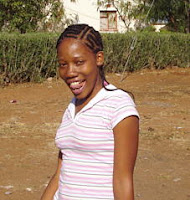
Tanning
Here is an excerpt from Bessie Head’s book on traditional life in Serowe, quoting an 80 year old tanner:
I have never been to school. I tan according to the way of our forefathers...when I make Tswana blankets I use mainly jackal skin. I rub off the pieces of meat, then apply the tanning material.... Now the wet leather has to dry in the sun. After drying, I take the skin and bury it in the cattl e kraal beneath the manure - not very deep, about 3 inches. I choose a time when the kraal is unused because if the cows trample on the skins, they will also urinate on them and spoil them. I bury the skin for half a day in the manure. The manure helps to make the skin soft for handling. When I take the skin from the kraal, I pound it and pound it with my hands to make it softer, the same way women rub the washing.
e kraal beneath the manure - not very deep, about 3 inches. I choose a time when the kraal is unused because if the cows trample on the skins, they will also urinate on them and spoil them. I bury the skin for half a day in the manure. The manure helps to make the skin soft for handling. When I take the skin from the kraal, I pound it and pound it with my hands to make it softer, the same way women rub the washing.
When I was here before, I bought a skin blanket which my younger brother had for many  years. Little did we realise where it had been cured before it came into our hands.
years. Little did we realise where it had been cured before it came into our hands.
Proposals
In the past when I was travelling and was younger and, I presume, better looking, I used to get regular proposals as soon as women learned I was from Canada. So far I have had three. The latest was from the young lady here who wanted me to take her to Canada. I said that I did not think that was possible and she said: “I know, it is because of your wife!” I did admit that my wife might not be happy if I returned with a lovely young lady such as her.
The youngsters here wanted to know where their picture from several weeks ago was. I told them I would sent it to Tom. They wanted another picture taken and this time they decided to play around much to their own amusement.
T-Shirt Slogan
Also I have twice seen T-shirts with the slogan: “The couple that tests together stays togethe r.” It suggests an interesting dynamic in a relationship.
r.” It suggests an interesting dynamic in a relationship.
Animals


No comments:
Post a Comment